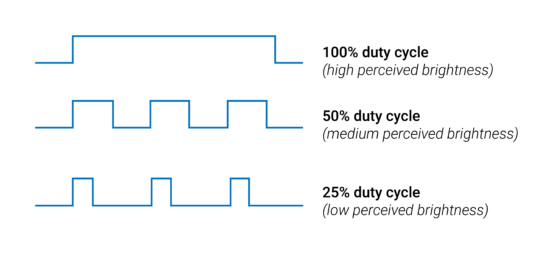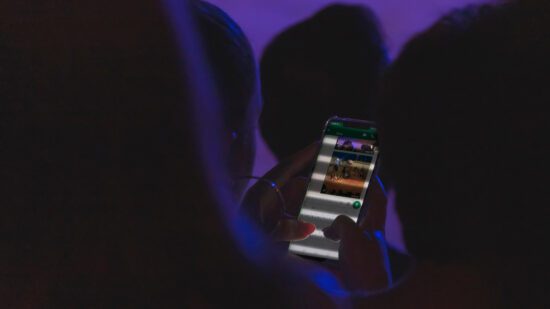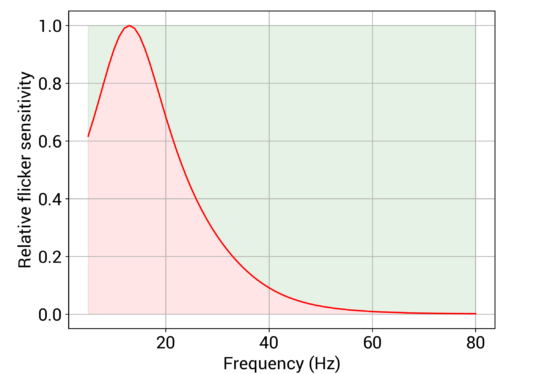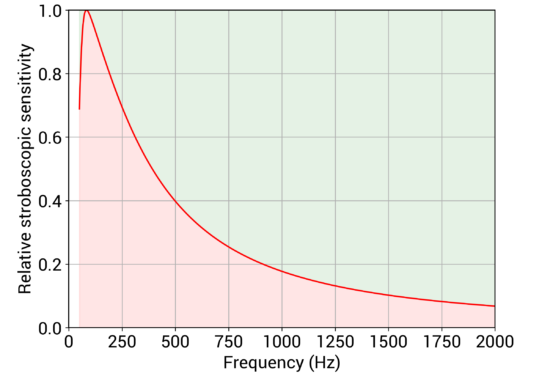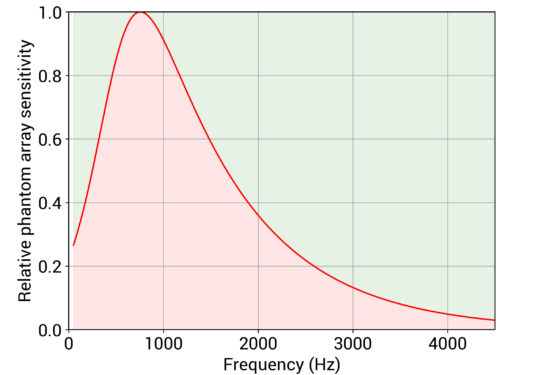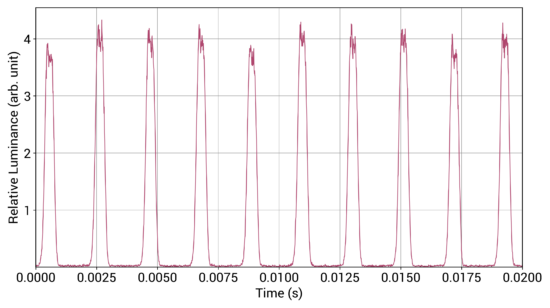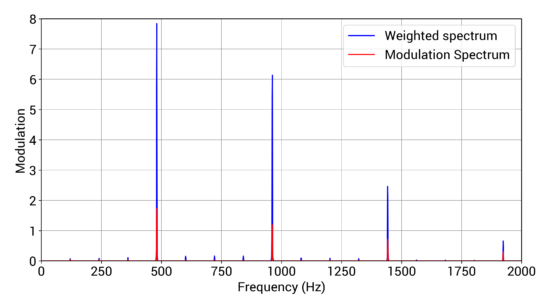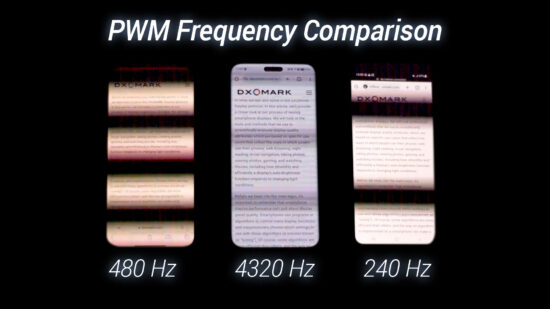
Eye comfort has become a growing concern among smartphone users, as well as device makers, who are paying more attention to the impact of screen time on health. DXOMARK recently introduced its Eye Comfort Label, which evaluates key factors that affect our visual experience and comfort. One of the elements we measure is flicker perception, which is linked to temporal light modulation.
In this Decodes article, we’ll look at temporal light modulation (TLM), the rapid oscillation of light output of a light source, or any light-emitting devices such as a smartphone screen and its effects, named temporal light artifacts (TLAs). These artifacts affect visual comfort and the overall screen experience.
Temporal light modulation is known to be disturbing to some users, and most smartphone displays exhibit some degree of TLM. It can be attributed to various factors, particularly the technique used to control the light intensity known as pulse width modulation (PWM).
The PWM is a method that flickers the display to create the illusion of a brighter or dimmer screen. It works by rapidly turning the light on and off at a frequency faster than the human eye can perceive. As human vision integrates light signal over time, the eye perceives this as changes in brightness. The ratio of the “on” time to the “off” time is called a “duty cycle,” and it determines the perceived brightness of the display.
A duty cycle at 100% indicates a screen that is constantly emitting light. If a digital signal spends half of the time on and the other half off, then the digital signal is said to have a duty cycle of 50%, and the screen appears dimmer.
This dimming technique is often used with OLED screens, and even though this flickering is usually too fast for the eye to see, it can still cause temporal light artifacts, which are undesired visual anomalies caused by modulated light.
Let’s take a closer look at the three categories of temporal light artifacts (TLAs) that might affect smartphone user: flicker, stroboscopic light effects, and phantom array effects.
Flicker
Flicker is a temporal light artifact defined by the International Commission on Illumination (CIE), an international authority on light, as the “perception of visual unsteadiness induced by a light stimulus, the luminance or spectral distribution of which fluctuates with time, for a static observer in a static environment.”11 CIE TN 006:2016 https://files.cie.co.at/883_CIE_TN_006-2016.pdf
It is perceived up to frequencies of about 90 Hz (cycles per second) depending on the conditions.
Scientists continue to study how easily flicker is perceived by humans, and their research so far shows that the perception of flicker is strongly related to the modulation depth (the difference between the on and off light levels), the flickering frequency, and the light intensity.
We can see how responsive human vision is to variations in brightness over time in the graph below from the ASSIST (Alliance for Solid-State Illumination Systems and Technologies) recommendation for flicker perception.22 Source: A flicker perception metric, Alliance for Solid-State Illumination Systems and Technologies, D Bodington BS, A Bierman MS and N Narendran PhD Lighting Research Center, Rensselaer Polytechnic Institute, Troy, NY, USA The red curve plots the relative sensitivity to flicker as a function of frequency. The higher the sensitivity, the more likely the user could perceive flicker at the considered frequency, with the greatest sensitivity around 15 Hz.
Most people would not see flicker with normal usage of their smartphone, but sensitive people can perceive light modulation at higher frequencies than usual. While PWM can contribute to flicker, this TLA can occur for a variety of other reasons such as the screen refresh rate or the content displayed.
Stroboscopic light effect
Another type of TLA is called the stroboscopic light effects, defined by the CIE as a “change in motion perception induced by a light stimulus, the luminance or spectral distribution of which fluctuates with time, for a static observer in a non-static environment.”33 CIE TN 006:2016
This effect is not specific to displays but more related to light sources in general and involves movement. The stroboscopic effect becomes visible when a moving object is illuminated by modulated light. The objects can appear to be moving at a slower speed than reality ( or even not moving at all). It is generally recognized as occurring for light sources modulated between 80 Hz to 2,000 Hz with the greatest sensitivity around 80 Hz, but are visible from 80 Hz to 1280 Hz in application contexts, according to recent research.44 https://cie.co.at/publications/visual-aspects-time-modulated-lighting-systems
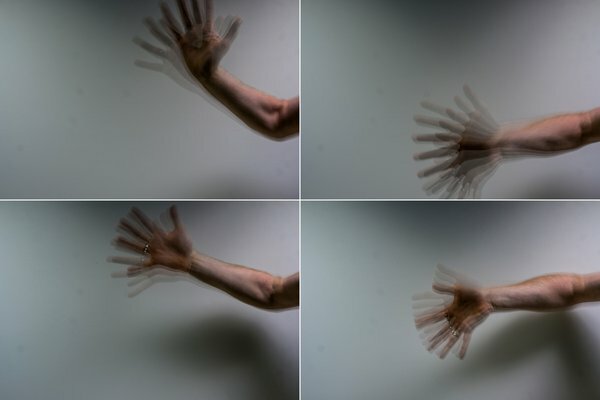
Phantom array effect/ghosting
Another temporal light artifact associated with displays and PWM is the phantom array effect, also known as ghosting.
The CIE defines phantom array effect as a “change in perceived shape or spatial positions of objects, induced by a light stimulus, the luminance or spectral distribution of which fluctuates with time, for a non-static observer in a static environment.” 55CIE TN 006:2016
The phantom array effect can be “observed” during saccades, the rapid movements of the viewer’s eyes that are necessary to our vision, and the effect gives the impression that the lit object is trailing the moving object or smeared. The observer might see a repeated image of the illuminated object.
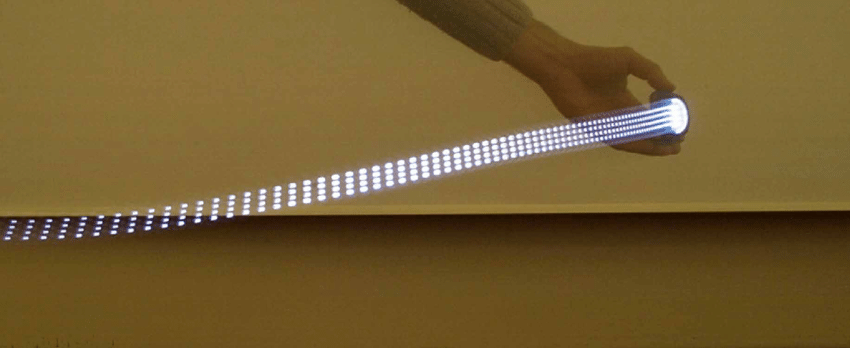
An example would be the ghosting effects of seeing trailing images of an automobile’s taillights at night or the car’s dashboard, as the driver’s eyes move from one focus point to another to safely drive the vehicle.
The TLM conditions where the phantom array is visible are still being established, but generally around 80 Hz to 2,500 Hz with a peak around 750 Hz. However, recent research highlighted a visibility up to 11,000 Hz.66 Visibility of temporal light artefact from flicker at 11 kHz – E Brown, T Foulsham, Chan-su Lee, A Wilkins, 2020 (sagepub.com)
Effects of TLM
Prolonged exposure to flickering screens can lead to eye strain, headaches, and fatigue even if the user is unable to see the modulation. In addition, flickering screens are suspected of disturbing the eye saccades, the rapid movements of the eyes; this could have a particular impact on children whose eye saccades are still developing and thus affect their ability to learn how to read.77 1789-2015 – IEEE Recommended Practices for Modulating Current in High-Brightness LEDs for Mitigating Health Risks to Viewers | IEEE Standard | IEEE Xplore
Light modulations can also affect other systems of the body beyond vision, such as circadian rhythms.
Stroboscopic light effects can destabilize the observer’s perception of the object, making it appear to be moving at a different rate. In some cases, prolonged exposure to stroboscopic lights (as with flicker) can even trigger epileptic seizures in highly sensitive people.
Arnold Wilkins, a Professor Emeritus of the University of Essex, is at the forefront of the research into how TLM affects humans. He is the author of many studies on the Visual Aspects of Time-Modulated Lighting Systems 88 https://files.cie.co.at/883_CIE_TN_006-2016.pdf and the effects they have the human body. Wilkins’s work focuses on how flickering light can lead to visual stress and discomfort such as eye strain, headaches, and other health issues. His studies have helped map out some of the possible physiological effects that certain TLM frequencies can have on sensitive people.
Metrology and measurement
Finding the right kinds of metrics and a consensus on standardization are the first steps in trying to find solutions to minimize the impacts of TLAs.
While there are standardized measurements for flicker and stroboscopic effects, scientists are still researching ways to measure accurately phantom array effects.
At DXOMARK, the smartphone Display protocol and the Eye Comfort label use the flicker perception metric standard 99 Source: A flicker perception metric, Alliance for Solid-State Illumination Systems and Technologies, D Bodington BS, A Bierman MS and N Narendran PhD Lighting Research Center, Rensselaer Polytechnic Institute, Troy, NY, USA to determine the probability that a light source flicker will be perceived by measuring the relative light output wave-form.
Because there currently are multiple metrics for stroboscopic and phantom array measurements, DXOMARK relies on the ones cited by the CIE, such as the “Stroboscopic Visibility Measure” (SVM) that was developed (Perz et al., 2014)1010 https://files.cie.co.at/883_CIE_TN_006-2016.pdf. Meanwhile, research is still in its early stages on how to measure phantom array effects so there is no consensus yet on how to measure it or compute it.
The measurement principles are similar for the three metrics used.
First, the luminance variations over time of the display are measured using a light sensor.
The measured temporal signal is then transformed into its frequency representation using a mathematical operation. This representation shows the frequency of lighting variations and its amplitude (named modulation) and corresponds to the graph that appears in DXOMARK Display test results.
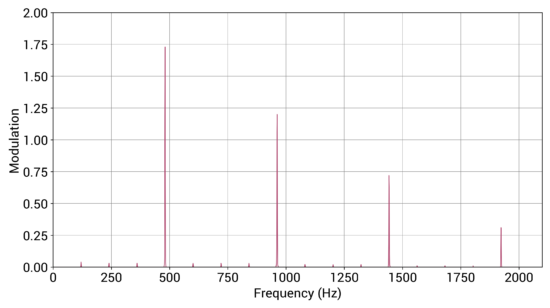
Each peak of the frequency representation is then weighted using the appropriate sensitivity curve, depending on the TLA evaluated. It allows us to evaluate the contribution of each frequency to the visibility of the considered TLA.
Finally, by using the appropriate formula, the data is translated into a single number representing the probability of detection of the TLA.
DXOMARK’s engineers are also working along with others in the scientific community on the latest ways to measure TLAs such as phantom array effects in order to better evaluate the quality of display screens.
Minimizing TLAs
Manufacturers are also more aware of the problems that temporal light modulation artifacts can have on the smartphone users’ experience, and they are also taking action. Some manufacturers have introduced features that aim to minimize the TLAs to improve the overall experience, such as boosting the frequencies of PWM, adjusting light modulation or increasing screen refresh rates, and other anti-flicker mode settings to minimize the potential harmful effects.
Others have also started listing the maximum frequency of their device’s PWM in their specifications to indicate that their screens are tuned to try to minimize temporal light artifacts. The PWM frequency can be a useful spec for users sensitive to TLAs because the higher the frequency, the less likely that TLAs will be perceived.
Conclusion
Not everyone will suffer from the side effects of TLAs in the same way, but it’s important to be aware of the factors that can lead to the probability of TLAs.
As we have seen, PWM and other factors contribute to temporal light artifacts on smartphone displays.
Display manufacturers have been more readily able to propose solutions to flicker because it is the TLA that has been extensively discussed, studied, and measured. Further research is still necessary for TLAs such as the phantom array effects to comprehend their impact on the human visual system.
In the end, the tuning of a smartphone display plays a key role in the user’s overall experience. DXOMARK provides the elements and measurements related to eye comfort, particularly the flicker perception metric, on the product page of eligible devices. A better understanding of temporal light artifacts and their effects on users, along with better ways to measure them, will lead to the necessary solutions that will empower smartphone users with the tools and settings to enjoy their devices safely for a long time and keep their vision healthy.


